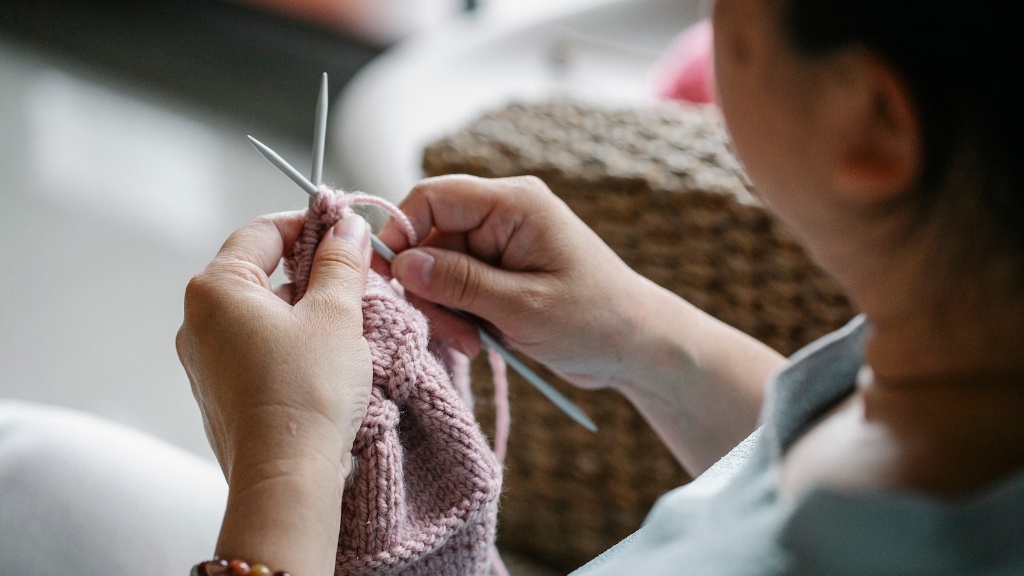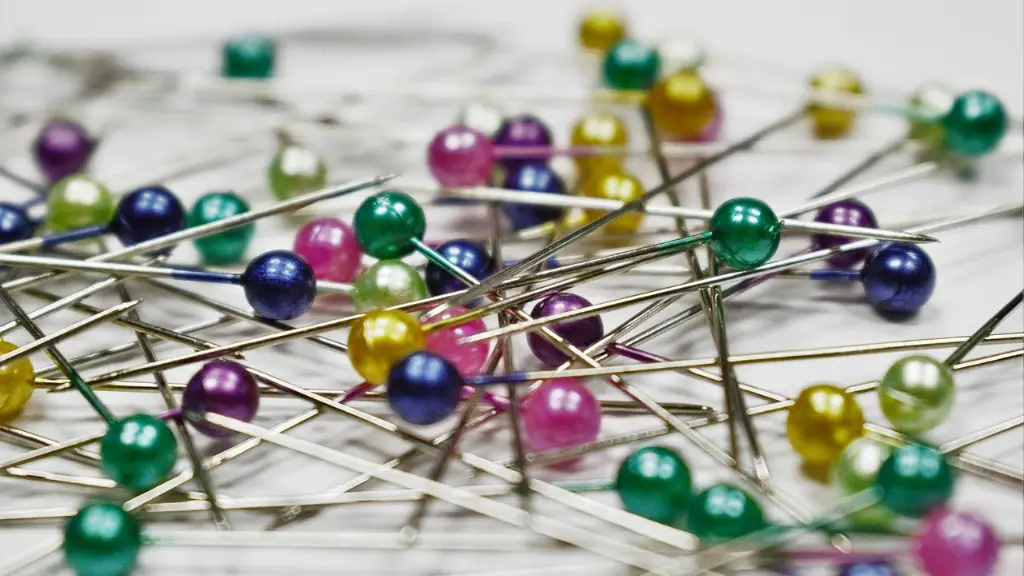Setting up the machine
The Singer sewing machine is a great tool that can handle many jobs, from small stitches to large projects like quilts. But before you start using it, there are a few steps that should be followed to ensure the machine is ready to use. To get the most from the Singer machine, beginning with the basics is key.
For starters, it’s important to select the correct bobbin for use in the Singer. The bobbin must be the same weight and size as the top thread and should sit evenly between the upper and lower pins. To ensure proper tension, it’s also important to check that the bobbin is centered. Then, place the bobbin into the bobbin case and thread it, making sure the tension is set according to the instructions in the manual.
Next, it’s time to thread the machine. Look for the two thread holders that are located near the top of the machine. Make sure the thread is of an appropriate weight and that it matches the weight of the bobbin. Insert the thread into the needle, making sure to keep tension on the thread while doing so. Then, Bobbin thread should be inserted into the hand wheel, and top thread should be set on the take-up lever.
Now that the thread is in place, it’s time to adjust the stitch length. Loosen the stitch length knob, if necessary, and set the length to the desired size. As a rule of thumb, a longer stitch length should be used for thicker fabrics and a shorter stitch length for thinner fabrics. Also, be sure to adjust the tension to match the thread and fabric. Finally, the presser foot should be adjusted so that it is in good contact with the fabric when sewing.
Stitching Techniques
When it comes to working with the Singer sewing machine, one of the primary techniques is backstitch. This stitch is used to align seams, permanently secure fabric edges and create buttonholes. To create a backstitch, set the machine to a reverse straight stitch and sew three or four stitches. Then, bring the needle back up to the beginning of the stitch and sew another three or four stitches. This process should be repeated until the desired length of the seam is achieved.
Other stitches that can be used with the Singer machine include forward stitch, zigzag and basting. For forward stitch, set the machine to a straight stitch and sew the fabric together. Zigzag stitch is used when a more finished look is desired. To create this stitch, set the machine to a zigzag setting and sew the fabric together. Lastly, basting stitch is used to temporarily secure two pieces of fabric and can be accomplished with the straight stitch setting.
Selecting Fabric
The type of fabric that is used on the Singer machine can vary widely and should be chosen based on the project. In general, lightweight fabrics such as cotton or calico should be used for small projects. Additionally, heavier fabrics like denim or wool should be used for more advanced projects.
When selecting fabric for a project, it’s also important to consider the type of thread that will be used. Again, the weight of the thread should match the weight of the fabric and the same goes for the bobbin. If the thread and bobbin are too heavy for the fabric, the project may not look as neat or tidy when finished. Furthermore, fabrics with a nap (a raised surface) should be sewn with a nap so that the stitches are less likely to pull and be more secure.
Maintaining the Machine
Maintaining the Singer is essential for its proper functioning. Penney Simmons, a best-selling author on sewing machines, advises that cleanliness is paramount in preserving the long-term functionality of any sewing machine, not just the Singer.
This includes cleaning out thread lint and fabric debris that accumulates over time to make sure it doesn’t cause any damage to the machine. Also, it’s important to oil it periodically to keep the moving parts lubricated and to ensure the machine is running smoothly.
It’s also important to read the instruction manual that came with the Singer machine. This manual provides all the necessary information when it comes to the operation and care of the machine.
Troubleshooting the Machine
If problems arise with the Singer machine, it is important to identify their causes. If the machine is having difficulty threading or pick-up problems, it could mean that the machine is not adjusted properly. In this case, it is best to refer to the manual or consult a professional.
In addition, if the tension on the machine is too tight, or if the machine is skipping stitches, this could indicate that the thread is either the wrong size or type, or the tension needs to be adjusted. In either case, the thread should be tested and the tension should be adjusted accordingly.
Finally, if the fabric is puckering or rippling, it may mean that the stitch length needs to be adjusted, the needle is damaged or the fabric is too thick. If this is the case, the stitch length should be adjusted, the needle should be replaced, and the fabric should be switched to a lighter weight.
Applying Techniques for Projects
Once a user becomes more experienced with the basics of the Singer machine, it can be used for more complex and interesting projects. Simmons recommends trying out patchwork quilting, creating bags, or making clothing. All of these projects will require more precise measurements and more accurate stitching.
When starting a new project, select fabrics that best suit that particular project. It’s important to consider the fabric’s weight, texture, and type when doing this. Also, take into consideration the thread that will be used. Threads should be of the same weight and size as the fabric, as this will ensure that the stitching is neat, even and secure.
When stitching, use the right kind of stitch for the desired effect. A straight stitch for seams, a zigzag for edging, and a basting stitch for temporally securing fabric. All of these techniques should be used correctly and an eye should be kept on the tension of the thread.
Decorative Touches
The Singer machine can also be used to add decorative embellishments to projects. Embellishments such as embroidery, tassels, ruffles, and appliqués can be done with the Singer machine. For example, the Singer machine can be used to make a simple ruched ribbon flower for accessories or clothing, for quilting, or for home decor.
To create a ruched ribbon flower, gather the fabric in the center and attach with a stitch. Then, spread out the gathers around the center and secure with another stitch. The flower should be gathered evenly to create a more pleasing effect.
In addition to stitching flowers, the Singer machine can also be used to add personalized touches with monograms. This can be accomplished by using the machine’s embroidery settings. Create a monogram design and then set the machine to the correct stitch settings. Stitch the design and finish off by adding any additional designs or details.
Learning Advanced Sewing
Working with the Singer can help users learn to master a variety of sewing techniques, such as topstitching or quilting. Topstitching is a decorative technique that is used to enhance the look of the fabric or to secure the seams. There are two basic types of topstitching: the ladder stitch and the flat seam.
To achieve a ladder stitch, set the machine to a small stitch length, stitch around the edge of the fabric and then use a needle to attach other edges together. For the flat seam, set the machine to a wider stitch length and sew both edges of the fabric together.
Quilting is another technique that can be mastered with the Singer. Begin by choosing the type of fabric and batting for the quilt. Batting should be the same weight as the fabric, and the same goes for the thread. Baste the quilt and begin stitching the quilt block together, making sure to have even tension and stitch length.
Working with Patterns
Working with patterns is a great way to sharpen sewing skills and make projects easier. When using patterns with the Singer machine, measure and cut out fabric according to the pattern instructions. Then, follow the directions and sew the pieces together. Taking exact measurements while cutting and stitching will help to ensure the project turns out correctly.
It is important to remember to always pay close attention to the grain of the fabric when cutting out the pattern. Additionally, it is important to understand the size of the project so that when pressing and correcting fabric, the right tools and techniques should be used. Finally, marking the pattern on the fabric with a tailoring mark or a fabric marker will make it much easier to keep track of where the pieces should be placed.
Finishing a Project
The last step in creating a project with the Singer machine is to finish it off. Once the project is stitched together and the edges have been trimmed, it’s time to press the seams. Simmons recommends taking the time to press the fabric with a damp cloth for a polished and professional finish.
Additionally, it’s important to choose the correct type of fastener for the project. For example, snaps, buttons, velcro, and zippers can all be used with the Singer. When choosing a fastener, consider the type of fabric, the weight of the project, and the number of times it will be used. This will make it easier to select the right fastener.
When a project is finished and the fasteners are in place, it’s time to search for any loose threads, snip them off, and enjoy the project. With all this information, a user will be ready to tackle any project they set their mind to.


